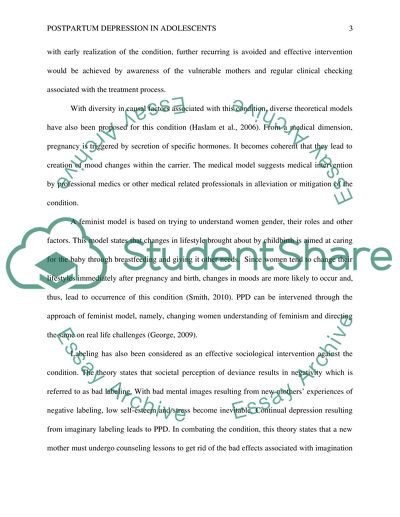Cite this document
(“Postpartum depression in adolescents Research Paper”, n.d.)
Retrieved from https://studentshare.org/psychology/1396227-literature-review
Retrieved from https://studentshare.org/psychology/1396227-literature-review
(Postpartum Depression in Adolescents Research Paper)
https://studentshare.org/psychology/1396227-literature-review.
https://studentshare.org/psychology/1396227-literature-review.
“Postpartum Depression in Adolescents Research Paper”, n.d. https://studentshare.org/psychology/1396227-literature-review.


